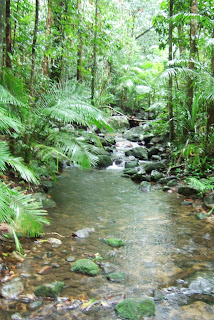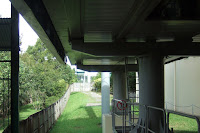Bushfires in Victoria, Australia
Thanks to all my overseas friends who expressed concern over the effects of the horrific Victorian Bushfires on me. My heart is heavy for the people killed, injured and affected by the Victorian fires, but I want to assure my overseas friends that I am quite safe.
It is a long while since I added to this blog, but I felt this was the easiest way to let people know. This shows that I am a long way from the action:
I am on the coast just above the most Easterly point. On the map I am just below the NSW/Queensland border just South of Brisbane. I'm in the lucky area for the moment, far from both the fires and the floods. It's a big country.
Pottsville is 2000km(1250 miles) north of the Victorian bushfires and 1600km(1000 miles) south of the massive floods in Ingham. We have had fires around us here in the recent past, but not so far this year.
Australia is roughly the same size as the contiguous US. Victoria, at the bottom of the continent, is where the fires were worst. This map shows why.
Victoria's climate leads to good tree growth, with lots of eucalypt forests. But the lush winter growth becomes a hazard in summer when the harsh hot winds come out of the central deserts, drying the countryside. A couple of weeks ago the temperatures started exceeding 40C (104F), day after day, in South Australia and Victoria. Then, with the bush like a tinderbox ready to go, it only needs a lightning strike or a chance spark or a depraved firebug and it erupts. This was many separate fires, not one big one. Then the wind fans the flames, or sometimes the blaze becomes so powerful it creates it's own winds.
The problem is similar all the way from West of Adelaide to North of Brisbane within a few hundred kilometres of the coast. This time the major fires were all in Victoria but there are also several lesser fires burning in the other states.
To make it worse, eucalypt forests emit oil when they burn, which vaporises and results in "crown fires", infernos that actually burn above the trees and can move at the speed of the wind to ignite anything in their path, well ahead of the ground fire. That is why some towns disappeared with so little warning for the residents. American readers might note that one of the problems in California is that a lot of our eucalypts have been planted in forests there.
Unfortunately those who manage our forests and bush tend to forget the lessons of history. I watched Ash Wednesday from my home in 1983 and will never forget it. Black Friday in 1939 was before my time but I learned all about it in History class. I was in the district during the Shoalhaven fires in 2002.
I'm a "greenie", a firm supporter of preserving and maintaining Australia's fragile ecology and environment. But there are several different shades of green in the "greenie" community. Too many forget that fire is part of our natural ecology and that this continent has caught fire regularly since long before Europeans appeared here. In fact, some of our flora needs fire to germinate. But some greenies hold protests if anyone cuts down a tree and others deter those who manage our bush from controlled burning in the winter because a few koalas and wallabies may be singed. They forget the past, when the uncontrolled build up of fuel in the bush leads to days like last Saturday. The human toll is terrible and horrifying, but whole populations of native fauna also disappeared that day.
I'll stop there. I get too angry and emotional on this subject.
Alan


















































